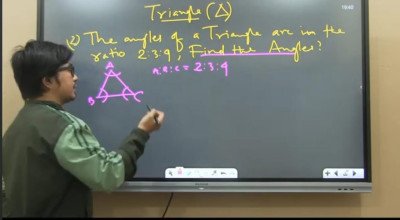Course description
In a typical mathematics curriculum, the concept of rational numbers is usually introduced around the 7th grade level. Rational numbers are numbers that can be expressed as a fraction of two integers, where the denominator is not zero. This includes integers, fractions, and terminating or repeating decimals.
Here are some key points covered in this chapter :
Definition: Rational numbers are introduced as numbers that can be expressed in the form p/q, where p and q are integers and q is not equal to zero.
Examples: Examples of rational numbers include fractions like 1/2, 3/4, -5/7, as well as integers like -3, 0, 7.
Operations: Students learn how to perform operations (addition, subtraction, multiplication, division) with rational numbers. This involves techniques like finding a common denominator for addition and subtraction, and multiplying and dividing fractions.
Equivalent Fractions: Students learn about equivalent fractions and how different fractions can represent the same rational number. For example, 1/2 is equivalent to 2/4.
Decimals: Rational numbers can also be represented as decimals. Students learn about terminating decimals (like 0.75) and repeating decimals (like 0.333...).
Ordering: Students learn to compare and order rational numbers on a number line.
Word Problems: Real-world word problems involving rational numbers are used to reinforce concepts and show practical applications.
The focus at this level is to build a solid understanding of what rational numbers are, how they are represented, and how they behave in operations. This lays the groundwork for more advanced mathematical concepts in later grades.
একটি সাধারণ গণিত পাঠ্যক্রমে, মূলদ সংখ্যার ধারণাটি সাধারণত 7 তম গ্রেড স্তরের কাছাকাছি চালু করা হয়। মূলদ সংখ্যা হল এমন সংখ্যা যা দুটি পূর্ণসংখ্যার ভগ্নাংশ হিসাবে প্রকাশ করা যেতে পারে, যেখানে হর শূন্য নয়। এর মধ্যে রয়েছে পূর্ণসংখ্যা, ভগ্নাংশ এবং শেষ করা বা পুনরাবৃত্তি করা দশমিক।
এখানে এই অধ্যায়ে কভার করা কিছু মূল বিষয় রয়েছে:
সংজ্ঞা: মূলদ সংখ্যাগুলিকে সংখ্যা হিসাবে প্রবর্তন করা হয় যা p/q আকারে প্রকাশ করা যেতে পারে, যেখানে p এবং q পূর্ণসংখ্যা এবং q শূন্যের সমান নয়।
উদাহরণ: মূলদ সংখ্যার উদাহরণগুলির মধ্যে রয়েছে 1/2, 3/4, -5/7 এর মতো ভগ্নাংশ, পাশাপাশি -3, 0, 7 এর মতো পূর্ণসংখ্যা।
ক্রিয়াকলাপ: শিক্ষার্থীরা শিখে কিভাবে মূলদ সংখ্যা সহ ক্রিয়াকলাপ (যোগ, বিয়োগ, গুণ, ভাগ) সম্পাদন করতে হয়। এতে যোগ ও বিয়োগের জন্য একটি সাধারণ হর খুঁজে বের করা এবং ভগ্নাংশকে গুণ ও ভাগ করার মতো কৌশল জড়িত।
সমতুল্য ভগ্নাংশ: শিক্ষার্থীরা সমতুল্য ভগ্নাংশ সম্পর্কে শিখে এবং কীভাবে বিভিন্ন ভগ্নাংশ একই মূলদ সংখ্যাকে উপস্থাপন করতে পারে। উদাহরণস্বরূপ, 1/2 হল 2/4 এর সমতুল্য।
দশমিক: মূলদ সংখ্যাকে দশমিক হিসাবেও উপস্থাপন করা যেতে পারে। শিক্ষার্থীরা দশমিকের সমাপ্তি (যেমন 0.75) এবং দশমিকের পুনরাবৃত্তি (যেমন 0.333...) সম্পর্কে শিখে।
ক্রম: শিক্ষার্থীরা একটি সংখ্যা রেখায় মূলদ সংখ্যার তুলনা করতে এবং ক্রম করতে শেখে।
শব্দ সমস্যা: মূলদ সংখ্যা জড়িত বাস্তব-বিশ্বের শব্দ সমস্যাগুলি ধারণাগুলিকে শক্তিশালী করতে এবং ব্যবহারিক প্রয়োগগুলি দেখানোর জন্য ব্যবহৃত হয়।
এই স্তরে ফোকাস হল মূলদ সংখ্যাগুলি কী, কীভাবে তাদের প্রতিনিধিত্ব করা হয় এবং তারা ক্রিয়াকলাপে কীভাবে আচরণ করে সে সম্পর্কে একটি দৃঢ় ধারণা তৈরি করা। এটি পরবর্তী গ্রেডে আরও উন্নত গাণিতিক ধারণার ভিত্তি তৈরি করে।



















